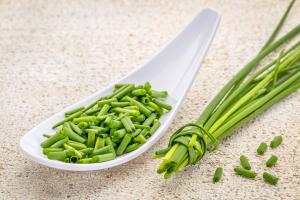Introduction
Calcium is an essential nutrient for plant growth and development, and it plays a crucial role in the structural stability of cell walls. Tomatoes and peppers are two popular vegetable crops that require adequate calcium for optimal growth and yield. In this article, we will explore how much calcium these plants need and how to ensure they receive enough of it.
The Importance of Calcium for Tomato and Pepper Plants
In tomato and pepper plants, calcium is important for several reasons. First, it is essential for strong cell walls, which help to prevent disease and pests from penetrating the plant. Second, it helps regulate water movement in the plant, which is critical for maintaining proper turgor pressure and preventing wilting. Finally, calcium is involved in enzymatic processes within the plant, including the production and activation of plant hormones that regulate growth and development.
How Much Calcium Do Tomato and Pepper Plants Need?
The amount of calcium that tomato and pepper plants require varies depending on several factors, including the stage of growth, soil pH, and overall health of the plant. Generally, young plants require less calcium than mature plants, and plants growing in acidic soils may need more calcium supplementation than those growing in neutral or alkaline soils.
As a general guideline, tomato and pepper plants require around 1.5-2.5 pounds of calcium per 1,000 square feet of garden space. This can be provided through amendments such as lime, gypsum, or bone meal, or through foliar sprays that contain calcium. It is important to monitor soil pH and nutrient levels to ensure that the plants are not receiving too much or too little calcium.
Symptoms of Calcium Deficiency
A calcium deficiency in tomato plants can present as blossom end rot, a condition where the bottom of the fruit becomes black and leathery. In pepper plants, calcium deficiency can cause stunted growth, yellowing of leaves, and a reduced yield. Other symptoms of calcium deficiency in plants can include necrosis or wilting of leaves, curling or distortion of new growth, and increased susceptibility to disease and pests.
Supplementing Calcium for Tomato and Pepper Plants
There are several ways to supplement calcium for tomato and pepper plants. One is to add lime or gypsum to the soil to raise soil pH and provide calcium. Another option is to use bone meal, which is a slow-release fertilizer that contains high levels of calcium. Foliar sprays are another effective method of providing calcium to plants. These sprays can be applied directly to the leaves of the plant and are quickly absorbed into the plant tissue. However, it is important to note that foliar sprays should not be relied upon as the sole source of calcium, as they are not as effective as soil amendments at providing sustained levels of the nutrient.
Conclusion
Calcium is a crucial nutrient for tomato and pepper plants, and ensuring that these plants receive adequate amounts is essential for optimal growth and yield. Monitoring soil pH, nutrient levels, and plant health can help gardeners determine how much calcium their plants need, and there are several methods for supplementing this nutrient, including soil amendments and foliar sprays. By providing sufficient calcium, gardeners can help their tomato and pepper plants thrive and produce delicious, healthy fruits.

 how many times do yo...
how many times do yo... how many planted tre...
how many planted tre... how many pine trees ...
how many pine trees ... how many pecan trees...
how many pecan trees... how many plants comp...
how many plants comp... how many plants can ...
how many plants can ... how many plants and ...
how many plants and ... how many pepper plan...
how many pepper plan...































